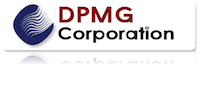
The Hardest Thing I Ever Did as a Leader
November 6, 2025
And How the Right Leaders Can Transform Everything
This article is centered on a truth every successful organization understands: leadership is the deciding factor in long-term performance. It’s easy to talk about strategy, culture, or technology, but none of it works without leaders who know how to inspire, align, and execute.
Leadership is the anchor of organizational success. Strong leaders drive engagement, productivity, and innovation. Poor leaders, on the other hand, silently drain the organization from the inside out. The difference between the two can determine whether your company thrives or merely survives.
Below are key insights we’re exploring this month—and why strengthening leadership is one of the highest-ROI investments you can make.
1. The True Cost of Poor Leadership
The impact of weak or unprepared leaders often goes unnoticed until it becomes a crisis. Poor leadership shows up in:
o Rising turnover and disengagement
o Inconsistent execution
o Slow decision-making
o Missed opportunities for innovation
o Increased conflict and confusion
Rising turnover and disengagement
Inconsistent execution
Slow decision-making
Missed opportunities for innovation
Increased conflict and confusion
Gallup’s research consistently shows that 70% of the variance in team engagement is directly tied to the manager. That means poor leadership isn’t just a personnel issue, it’s a financial one. Lost productivity, rehiring costs, and stalled initiatives add up quickly.
And here’s the key: poor leadership doesn’t announce itself. It creeps in quietly, until the damage is already done.
2. Leadership Readiness & Succession Planning: Your Strategic Advantage
One of the most overlooked drivers of long-term performance is leadership readiness.
Most organizations don’t fail because they lack talent—they fail because they lack prepared leaders whose skills match the company’s trajectory.
Succession planning and leadership readiness ensure:
· Continuity during growth or turnover
· Faster, more aligned decision-making
· Reduced operational risk
· Stronger organizational culture
· A built-in pipeline of future leaders
Succession planning isn’t about titles. It’s about building a bench of people who can step up, step in, and drive the organization forward without hesitation.
3. What Really Makes a Good Leader (and What Doesn’t)
There are hundreds of leadership models, but the core traits of great leaders remain consistent:
What Good Leaders Do:
Clarify priorities and expectations
Empower and coach their teams
Model accountability, starting with themselves
Communicate openly and consistently
Create a culture of trust and psychological safety
Inspire innovation, not compliance
What They Avoid:
· Micromanagement
· Ego-driven decision-making
· Withholding information
· Blame and shifting
· Ignoring team development
· Reacting instead of leading
Great leadership is less about charisma and more about clarity, consistency, and character.
4. Making the Business Case for Leadership Development
In tight markets and competitive environments, leadership development often gets pushed aside as a “nice-to-have.”
The reality?
It’s one of the highest, ROI investments you can make.
A strong business case includes:
· Reduced turnover (one of the most expensive line items for any organization)
· Higher employee engagement and productivity
· Greater innovation and adaptability
· Fewer costly mistakes
· Stronger customer satisfaction
· More resilient operations during change
Leadership development is not an expense, it’s a growth strategy. Organizations with strong leadership pipelines outperform their competitors year after year.
Final Thoughts: Leadership Is the Missing Link
If you want a healthier culture, stronger performance, and more innovation, start with leadership.
If you want more alignment, better decision-making, and higher retention, start with leadership.
And if you want an organization that can scale, adapt, and thrive, start with leadership.
Because at every level, frontline, mid-level, or executive—leaders shape reality for the people they serve. When leaders get better, everything gets better.
The Future is now
Jesus (Jes) Vargas is the Principal at DPMG Corp in Sacramento, CA. Jes and his team consult, coach and mentor business leaders in areas such as strategic planning, leadership development and Lean Thinking deployment. If you are concerned that there is not enough long-term strategic thinking going on in your organization, Jes can help. Call Jes at 916 712 6145. Or you can email him here.



